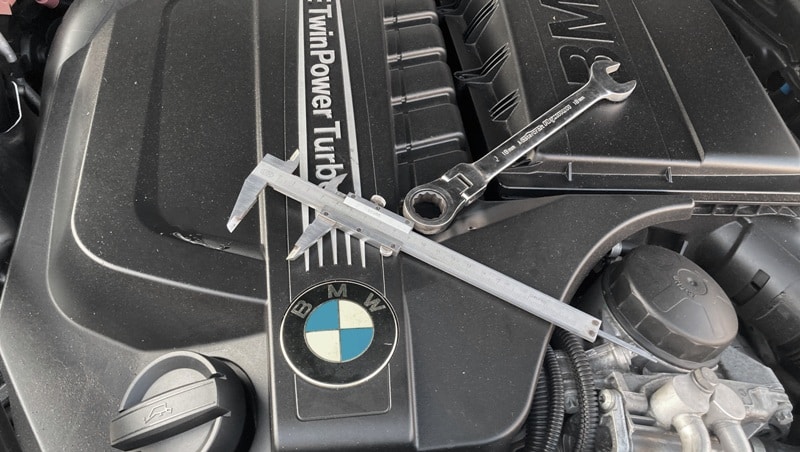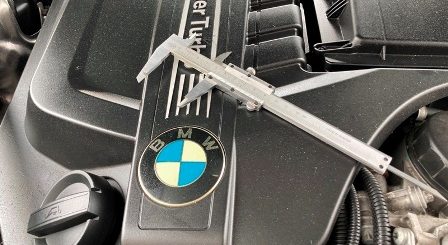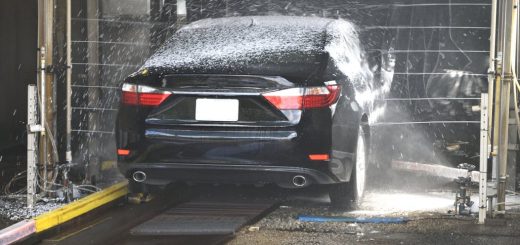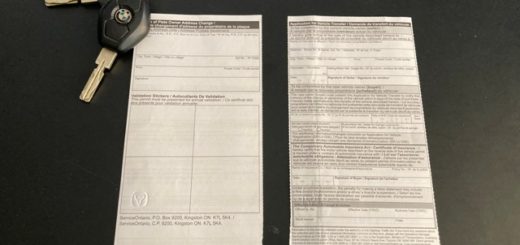How to Maintain and Make Turbocharged Engines Last Longer
Turbocharged engines have become mainstream in recent years with almost every manufacturer offering turbo versions of their cars, with some manufacturers going turbo only. Especially hybrids are exclusively equipped with turbo engines only. As turbocharged engines have become common so is the need for information on how to maintain and make those engines last longer.
Regarding reliability, in past decades turbocharged engines were installed mostly on sports cars and were generally unreliable, to say the least.
Clogged and/or leaking coolant and oil lines, blown turbo impeller bearings, broken impeller blades and broken waste gates were common occurrences (expensive common occurrences). However, turbocharged engines have come a long way and become quite reliable in recent years.
Just as reliable as naturally aspirated engines? Well, no, not there yet but reliable enough to be used extensively in ordinary, mundane, economical vehicles…your daily driver four door sedans or SUV.
What is a Turbocharged Engine and How it Works
Naturally aspirated engines (non turbo) create power by mixing fuel with air and detonating it inside cylinder burning chamber. “Naturally aspirated” means exactly that, air is drown into engine at a natural rate under normal pressure. Turbocharged engines work the same way with one small big difference, air pressure.
While naturally aspirated engines ingest air under normal pressure, turbocharged engines use a turbo (or a high speed fan if you will) to ingest air, compress it and create higher air pressure. More air (more oxygen) allows for more fuel to be added and more fuel translates into more power.
Turbocharger impellers are operated using exhaust flow. When engine is started, exhaust gases create air flow moving from exhaust valves to muffler and into atmosphere. Exhaust flow is utilized to operate turbocharger. An exhaust impeller or turbine wheel is mounted directly into exhaust line.
Exhaust impeller will spin due to exhaust flow and in turn will operate compressor wheel located inside the turbocharger housing. Exhaust impeller wheel and turbo compressor wheel operate at very high speed, 100,000 rpm or more depending on turbo design.
Compressed air is then sent to cylinder burning chambers at high pressure permitting for more fuel to be added creating higher power output per engine displacement.
Another similar design to Turbocharging is Supercharging. Same basic idea but instead of exhaust flow, a belt or gears connected to engine crankshaft are utilized to spin compressor impeller (or compressor wheel).
Details on; How Turbocharger works.
(If you are also looking for a fast and safe solution to sell your car, more here on “How To Sell Your Car Fast in Ontario“)
Are Turbocharged Engines Reliable?
Simple answer to question “are turbocharged engines reliable” is: turbocharged engines are reliable enough to be used normally as daily driver and will last a very long time if you maintain them regularly.
Another question: Are more turbocharged engines just as reliable as naturally aspirated engines (or non turbo engines)? No, they’re not, far from it but getting much better as time passes.
It’s completely natural for turbocharged engines to be less reliable than non turbo ones. Primary reason being, turbocharged engines have more components than naturally aspirated engines, more components mean more stuff to break and more trouble.
Turbocharged engines operate at higher pressures and compression than naturally aspirated engines, higher engine loads in short. Higher engine loads generally mean lower reliability as engines and other components are exposed at extreme forces.
Also, turbochargers operate at very high temperature as turbochargers are mounted directly into hot exhaust system. To prevent failure due to heat, coolant and oil is sent to turbocharger via coolant and oil lines to cool down turbocharger housing, bearings and seals. More coolant and oil lines mean less reliability as there are more things to go wrong.
Complexity of Turbocharged Engines
Another drawback as far as reliability goes is, turbocharged engines have extra sensors and actuators. These extra sensors and actuators are used to operate turbocharger at different speeds and power loads. As we know, sensors and actuators tend to go bad after a while, the more you have in your car the more failures you will get.
Intercooler is another component of turbocharged engines which does not exist in naturally aspirated engines. As turbochargers operate at very high temperature, air coming from turbocharged is very hot.
Intercooler is a kind of radiator and is used to cool down air before it enters the engine. Extra components, lines and hoses are a recipe for more things to go wrong as time passes and a used car gets older.
As a conclusion, turbocharged engines are not as reliable as naturally aspirated ones but reliability of turbocharged engines has been increasing and reliability gap between the two has shrunk. In any case, turbocharged engines are still reliable enough to be used extensively if you maintain them properly and usually last just as long as naturally aspirated engines. Only meaningful difference being more maintenance and repairs are required during engine lifespan.
Audi and VW have been using turbocharged engines on their sedans and coupes for decades, and it’s not unusual for those cars to go 300,000km or more with regular maintenance.
Benefits of Turbocharged Engines
Primary benefits of turbocharged engine are higher power per displacement and fuel efficiency. Weight is another benefit as turbocharged engines tend to be smaller and lighter than naturally aspirated ones. Also, by buying a turbocharged car, in some jurisdictions you save on annual vehicle taxes while not sacrificing power.
Power Per Engine Displacement
Turbocharged engines deliver more power in a smaller package (lighter and smaller engine). As an example, a 4 cylinder 2.0L turbocharged engine will deliver more or less same power as 2.7L V6 naturally aspirated engine. Increased power comes as a result of higher compression ratios, increased air pressure and higher fuel ingestion per cycle.
Torque is also quite higher than naturally aspirated engines once turbo kicks in. However, power usually comes with a lag although turbos are getting better. Lag means time required from the moment you press accelerator pedal to power delivery. Some manufacturers resort to installing two turbos to circumvent turbo lagging problem.
Fuel Efficiency
Fuel efficiency of turbocharged engines depends primarily on how you maintain them but generally are more fuel efficient than non turbo engines. Smaller engine displacement of turbocharged engine increase fuel efficiency, however not by much. Even though displacement is smaller than naturally aspirated engines, turbocharged engines are thirsty as higher air ingestion requires higher amounts of fuel.
Fuel efficiency comes mostly when you are idling at a red light or stuck in traffic. Say a 2.0L turbocharged engine producing same power as a 2.7L naturally aspirated engine. At speed both engines will have more or less same fuel efficiency. However, when at idle, turbocharged engine will run at 2.0L while naturally aspirated one will run at 2.7L, hence burning more fuel.
Taxes on Engine Size
Another benefit comes in form of annual vehicle permit taxes. While in US and Canada there are no taxes for engine displacement, Europe is a whole other story. Vehicles are taxed using engine displacement, ie you pay more annual tax for bigger engines.
Taxes have brackets which usually are limited at 1.0L, 2.0L,3.0L etc. When you pass one of thresholds you pay more taxes. As an example: a car with 1.8L engine is taxed less than a car with 2.0L engine. That’s where turbocharged engines come in, smaller displacement mean less taxes.
Also, if you see closely, engine displacements are smaller than tax thresholds. For example: VW or Audi 2.0L Turbo engines are not exactly 2.0 Liter but are 1.97 Liter. This is done to avoid tax threshold of 2.0L.
How to Maintain Turbocharged Engines and Make it Last Longer
Turbocharged engines are more finicky to maintain and require more maintenance than naturally aspirated engines, no doubt about it. However, there are few things you can do to prolong lifespan and avoid expensive repairs on turbocharged engines.
As we previously mentioned turbos operate at very high temperature, much higher than engine temperature. Engine oil is delivered to turbocharger via oil lines acting as a coolant, reducing the temperature of turbo housing, bearings and seals.
1- Change Engine Oil Frequently
Change engine oil frequently. It cannot be stressed and repeated enough: Engine oil is lifeblood of any engine but more so on turbocharged engines. While you should not neglect oil changes in any type of engine, naturally aspirated engine will tolerate some abuse or neglect. Turbocharged engines on the other hand will not tolerate neglect and will break down frequently causing your wallet to suffer, quite a bit.
High turbo temperatures will break down engine oil on turbocharged engines much sooner than on naturally aspirates engines. Sludge is a guaranteed result if you neglect oil changes or use manufacturers recommended 10,000 miles oil change intervals.
Use synthetic oil only. Do not use regular oil on turbocharged engines. Change engine oil at 5,000 miles or 8,000 km interval, don’t go any longer on oil changes. Some manufacturers are recommending unreasonable 10,000 miles or 16,000km oil change intervals. That’s misinformation and you should think twice if you plan to keep your car for a long time.
Manufacturers are liable only within warranty period. If your engine blows up after warranty period due to sludge you will pay for repairs yourself. Unreasonably long oil change intervals are being recommended and pushed for environmental purposes only, not because engines or engine oils got vastly better in last decade. Engines still work at same temperatures/pressures and synthetic oil has been around for a long time.
Changing engine oil frequently will avoid unnecessary and very expensive repairs in the future and give maximum longevity of your turbocharged engine. Buy quality fully synthetic engine oil and change it every 5,000 miles or 8,000 km for best reliability and engine longevity.
Details on: Oil Change Intervals.
Do Not Use Synthetic Blend Oil
Do not bother to spend more on synthetic blend oils, not worth the extra expense. Synthetic blends oils are a marketing strategy to sell overpriced regular oil under “Synthetic” brand. Well, its not synthetic. Blends have up to 25% of synthetic oil and the rest is just regular oil. It does absolutely nothing better than regular oil, as it is mostly just regular oil.
You are better off buying an expensive regular oil than a synthetic blend. Synthetic blends have very little synthetic oil, its there just to add word “Synthetic” on the bottle and charge a premium price for it. Don’t fall for these marketing schemes, use only full synthetic oil for turbocharged engines.
2- Warm Up Engine Up Before Driving
Oil pressure takes a bit of time before it reaches normal pressure and fully lubricates engine. It’s a very short period time and is measured in seconds, within few seconds oil pressure will be optimal and your car ready to drive. However, this is valid for engine itself, not the turbocharger.
In cold weather oil viscosity rises and flow of oil thru turbocharger small passages becomes slower. If you start the car and immediately drive, turbocharger will be deprived of oil and can lead to abrupt failure or premature turbocharger wear.
In winter time wait for 30 seconds or a minute before starting to drive, give time for engine oil to warm a bit and flow thru all turbocharged passages. Also, do not floor the car or drive spirited in first few minutes until oil has reached normal temperature.
Even in summer time would be best to wait for 10 or 15 seconds or so before you start driving. Just to make sure oil pressure at turbocharger has reached optimal pressure.
3- Cool Down Turbocharger After Driving
Turbochargers operate at very high temperatures and as we said engine oil is used as coolant. When you come to a stop after a long drive and you abruptly turn off engine oil will stop flowing.
Whatever oil remains inside turbocharger will start to break down due to high heat emitted from turbocharger. As a result sludge on turbocharger oil lines will be created. Sludge blocks oil passages and prevent optimal lubrication or cooling, it is number one killer of turbochargers. That’s why is very important to maintain turbocharged engines at higher standard than naturally aspirated ones.
Idle for at least 30 seconds before you shut off engine. Allow time for oil to flow thru turbocharger and lower turbo temperature. Just leave your car idle for a short amount of time before shutting it down. You don’t need to do this every time but when car is driven for long periods of time, under load or in summer time when is hot outside.
Most manufacturers have taken some measures against this very problem. Some turbocharged cars (Audi, VW, Mercedes) will keep radiator fan ON for a minute or so after you turn off engine. This is done to cool turbocharger as soon as possible and to prevent oil break down and sludge.
4- Do not Modify Your Daily Driver
Well, it’s easy to say but everyone likes more vroom and turbocharged engines are highly modifiable by design. You can add powerful turbos with higher pressures, ECU remapping or reprogramming, air filters, bigger intercooler, etc. There is a whole industry revolving at modifying turbo engines.
However, you got to bear in mind the purpose of your car. On daily driver cars manufacturers will already designed turbocharged engines to run at maximum performance and loads. What that means is: engine cannot handle any more power.
By designing engines to run at maximum performance and maximum load, manufacturers can use smaller displacement and lighter engines. Smaller engines increase fuel efficiency and weight of the vehicle. If you add up more power to an already maxed out engine you will end up with a broken piston or spun bearings, basically a blown engine.
An alternative to modifying turbocharged engine is to maintain it properly, make you car last longer and be more reliable in long run.
5- Do not Push Turbocharged Engines
Your foot makes biggest difference when it comes to lifespan of turbocharged engines. Take it easy, do not push your car at maximum power all the time.
No one is saying you can’t drive your car and have fun with it (turbos are quite fun) but do not redline it all the time. Especially as we said earlier, do not drive fast or push engine to redline when oil is still cold. Wait until engine has reached normal temperature and oil is at hot viscosity rating.
Some turbocharged engines are equipped with safety features which limit high revs until engine has reached optimal temperature or thereabout. Take your time and don’t floor it, speed incrementally and keep your foot light. Your car will thank you by being reliable and fuel efficient.
6- Keep Air Filter Clean
Do not neglect air filter. Turbo engines draw air at higher rate due to turbo pressure and air filter will get dirty or clogged much faster than naturally aspirated engines.
Replace air fitter frequently or at the very least based on manufacturers recommendation. Likely their recommendations are quite high as with everything else, I would replace the air filter at half the time recommended by owner manual.
Air filter is quite cheap and very easy to replace, you can do it yourself in most cars. Use quality air filter, even if you buy an aftermarket one do no buy cheapest one possible. Air filter makes a big difference on turbocharged engine operation and reliability.
7- Use Recommended Fuel Only
Most turbocharged engines require premium fuel, not all of them but vast majority do. Using a lower octane rating fuel will cause premature detonation and overtime irreparable engine damage. Due to their nature of turbocharged engines are more susceptible to knocking.
As we said, most turbocharged engines are designed to run at their maximum capacity, there is little room for premature detonations. Use only premium fuel if manufacturer recommends it.
However, do NOT use premium fuel if manufacturer recommends regular fuel. You will be wasting your money with zero benefits. Actually making things worse as ECU will have to manipulate engine timing.
Details on: Regular vs Premium Fuel
8- Keep Cooling System in Optimal Condition
Most turbochargers are water cooled. While cooling system in naturally aspirated engines has one job only (to cool down engine) in turbocharged engines cooling system is also used to cool down turbocharger.
Coolant lines extend from engine main cooling system to turbocharger housing in an effort to reduce temperature and increase lifespan of turbos. Hence, maintenance and optimal operation of cooling system becomes vital in turbocharged engines.
Generally speaking, engine coolant likes to leak. That’s because cooling system has an array of gaskets, valves and coolant lines, much more so on turbocharged engines. To make things worse, most of cooling system lines in modern cars are made of plastic (cheap) and don’t last long. Coolant lines have basically become a maintenance item which you should replace form time to time.
In terms of maintenance, cooling system is simple and apart from coolant changes it does not require any other maintenance, only repairs when a component break and start to leak. Replace engine coolant on time as per manufacturer recommendation. Usually, it’s about every 50,000 miles (70,000 km) or every 5 years whichever comes first.
Make sure water pump is functioning properly and engine thermostat is in good working order, replace as needed if needed. Check cooling system for leaks and repair or replace coolant lines as necessary. Also, check for leaks around coolant lines on turbocharger housing.
Failure of cooling system and/or clogged turbocharger coolant lines will cause turbocharger to overheat reducing turbo lifespan. Overeating almost always leads to complete turbocharger failure.
Conclusion on How to Maintain Turbocharged Engines
Due to environmental enforcement manufacturers are dumping their naturally aspirated engine in favor of smaller displacement turbocharged engines. BMW and VW has been using turbos mostly on their cars for a decade.
Lately Toyota and Honda are replacing their V6 naturally aspirated engines with 4 cylinder turbocharged engines. Toyota for example drooped their long run naturally aspirated V6 on Tacoma in favor of a 4 cylinder turbo. 2024 Tacoma now comes only with a turbo engine. Also, as far as Hybrids cars go, these are almost all turbocharged engines coupled with electrical hybrid system.
As manufacturers slowly change to turbocharged engines you have to adapt and learn how to maintain and make these engines last longer.
Turbocharged engines although more finicky and less forgiving, are generally reliable and fuel efficient. These engines just need a bit more care and maintenance than non turbo engines. Use recommended fuel, keep your foot light, warm up engine before driving and most importantly keep up regular oil changes with quality synthetic oil.
As long as you keep up with regular maintenance and repairs, you should be able to get a long and reliable lifespan out of turbocharged engine in your car.
(If you are also looking for a fast and safe solution to sell your car, more here on “How To Sell Your Car Fast in Ontario“)
Comments: If you have any questions or suggestions related to this post or Used Car Toronto in general, don’t hesitate to use comment section below.













